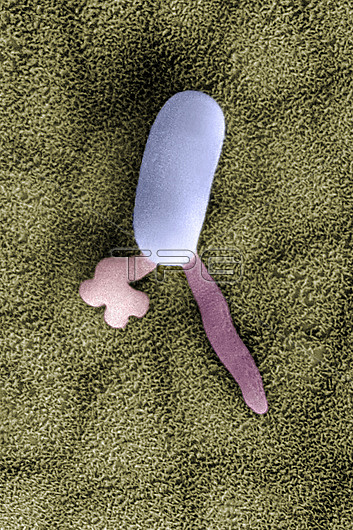
Scanning electron micrograph of a newly germinated spore of the mildew, Erisyphe pisi, on a pea leaf, Pisum sativum. The picture shows a spore, 25 microns long (blue) attached to the leaf at its lower left (pink). This is the site of the appressorium that secures the spore, and which pierces the leaf wall to obtain water from the interior. Once the water supply is established, the spore produces hyphae; here, so far one only, to lower right (dull red). Hyphal branches can also enter the leaf at intervals, by dissolving its wall (not shown here). These hyphal connections allow the pathogen to survive even the most hostile conditions on the surface of the leaf. Powdery mildews are actinomycete fungi that, especially in dry seasons, may cause serious losses to cereal or sugar beet crops. They can overcome resistance bred into crops, even evade fungicides, by developing new genetic races.
| px | px | dpi | = | cm | x | cm | = | MB |
Details
Creative#:
TOP27149926
Source:
達志影像
Authorization Type:
RM
Release Information:
須由TPG 完整授權
Model Release:
N/A
Property Release:
N/A
Right to Privacy:
No
Same folder images:

 Loading
Loading